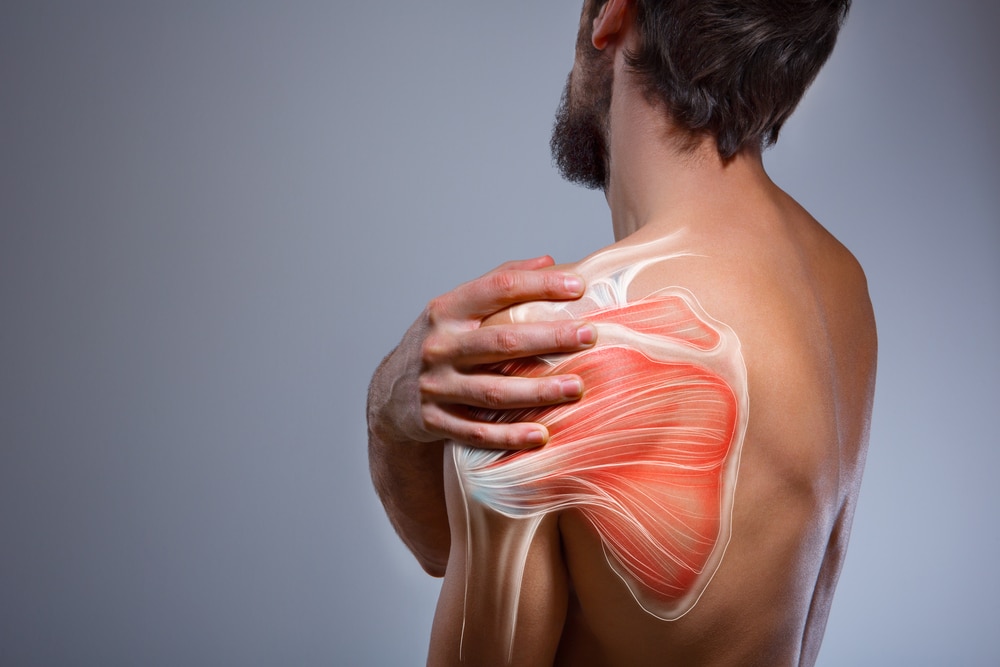What are the symptoms of a SLAP tear?
A SLAP tear (Superior Labral Anterior to Posterior tear) affects the shoulder’s labrum, which is the ring of cartilage that helps stabilize the shoulder joint. Symptoms of a SLAP tear can include:
- Shoulder Pain: Often located at the front and top of the shoulder. The pain can be sharp or aching and may worsen with certain movements.
- Shoulder Weakness: Difficulty lifting objects or performing activities that involve overhead motions.
- Instability: A feeling that the shoulder might “pop out” or is unstable, particularly during overhead activities or when moving the arm.
- Clicking or Popping Sensation: A clicking or popping sound or sensation in the shoulder during movement.
- Decreased Range of Motion: Limited ability to move the shoulder fully or discomfort when trying to reach or lift.
- Difficulty with Overhead Movements: Pain or weakness when performing tasks that require raising the arm above the head.
If you suspect a SLAP tear, it’s important to consult a healthcare provider for an accurate diagnosis and appropriate treatment plan.
What are the causes of a SLAP tear?
A SLAP (Superior Labral Anterior to Posterior) tear can result from various causes, often related to shoulder mechanics or injury. Common causes include:
- Repetitive Overhead Activities: Engaging in activities that involve frequent overhead motions, such as throwing, lifting, or swimming, can put stress on the shoulder labrum and lead to a tear.
- Acute Trauma or Injury: A sudden, impactful injury to the shoulder, such as from a fall, direct blow, or car accident, can cause a SLAP tear.
- Shoulder Dislocation or Instability: Repeated dislocations or episodes of shoulder instability can damage the labrum, leading to a SLAP tear.
- Age-Related Wear and Tear: As people age, the labrum can degenerate and become more susceptible to tears due to natural wear and tear.
- Labral Degeneration: Conditions that lead to degeneration of the labrum, such as certain forms of arthritis or other degenerative joint diseases, can contribute to the development of a SLAP tear.
- Forceful Lifting or Twisting: Sudden or forceful lifting, twisting, or pulling motions can stress the labrum and cause a tear, especially if the shoulder is not properly supported or aligned.
Understanding the underlying cause of a SLAP tear is important for determining the most effective treatment and prevention strategies.
What is the treatment for a SLAP tear?
The treatment for a SLAP (Superior Labral Anterior to Posterior) tear depends on the severity of the tear and the patient’s symptoms. Treatment options generally fall into conservative (non-surgical) and surgical approaches:
Conservative Treatment:
- Rest: Avoiding activities that exacerbate symptoms helps reduce strain on the shoulder.
- Ice Therapy: Applying ice packs to the shoulder can help reduce pain and swelling.
- Physical Therapy: A physical therapist can design exercises to strengthen the shoulder muscles, improve range of motion, and stabilize the shoulder joint.
- Medications: Nonsteroidal anti-inflammatory drugs (NSAIDs) like ibuprofen or acetaminophen can help manage pain and inflammation.
- Corticosteroid Injections: For persistent inflammation, corticosteroid injections can provide temporary relief.
Surgical Treatment:
- Arthroscopic Surgery: If conservative measures are ineffective, surgery may be necessary. Arthroscopic surgery involves using a small camera and specialized instruments inserted through small incisions to repair the labrum. The surgeon may reattach the torn labrum to the bone or remove damaged tissue.
- Rehabilitation Post-Surgery: After surgery, a structured rehabilitation program is crucial for recovery. This includes physical therapy to regain strength, flexibility, and function in the shoulder.
The choice between conservative and surgical treatment depends on the severity of the SLAP tear, the patient’s activity level, and the impact on daily life. A healthcare professional will evaluate these factors to recommend the most appropriate treatment plan.

Leave a Reply
You must be logged in to post a comment.